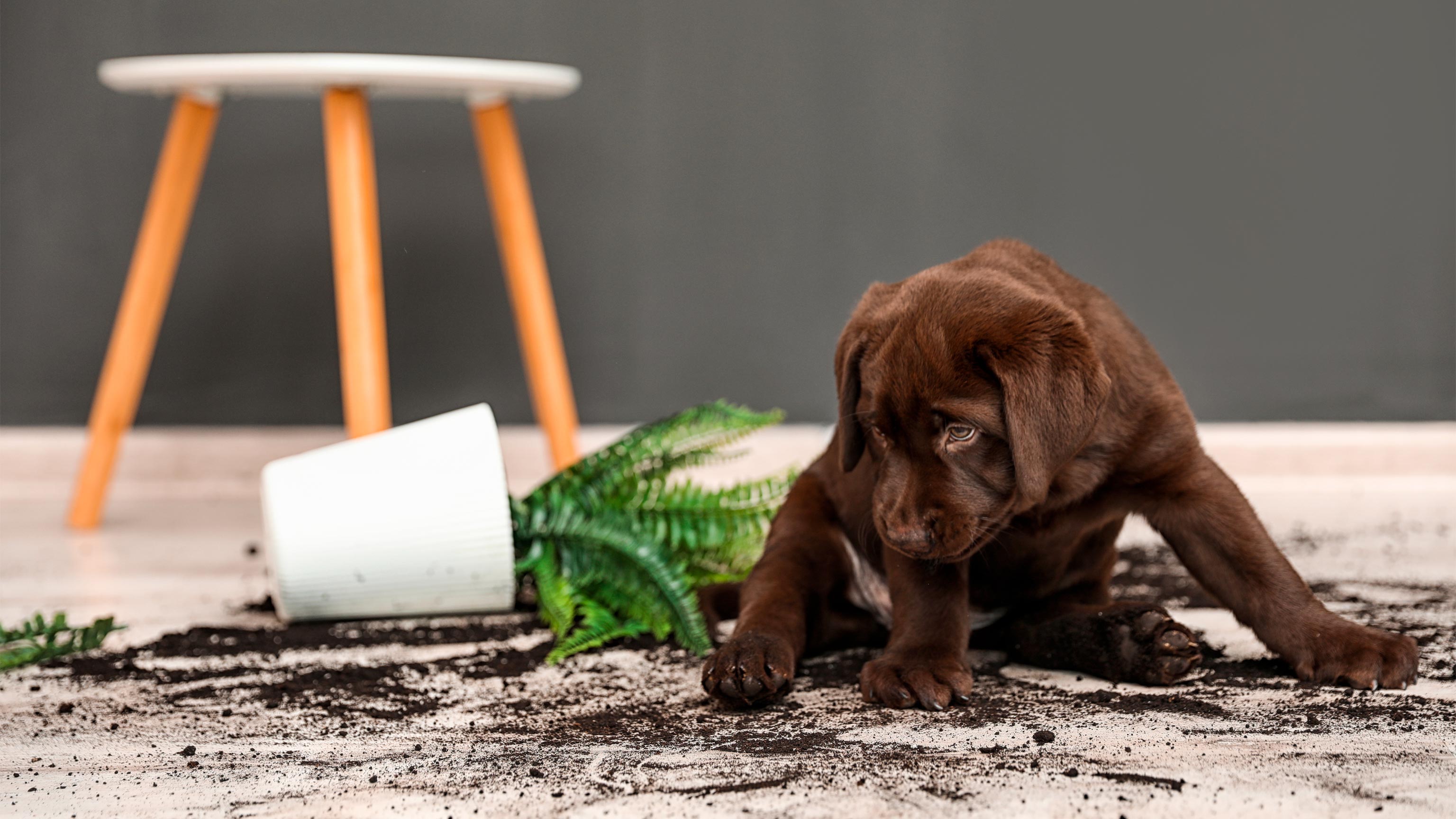Maintaining a clean, hygienic workplace is important to prevent the spreading of infectious diseases. In the animal care industry, this helps to protect the animals you work with and reduces the risk to yourself and others from potentially zoonotic diseases. A dirty workplace also looks unprofessional to customers and may prevent them from returning in the future.
In addition, regular cleaning helps you identify damage to animal housing and equipment and get it fixed early before it causes injury or is beyond repair, and regular cleaning makes cleaning easier. Leaving something for a long time to clean makes cleaning more difficult when the task is done.
There are some differences between cleaning and sanitising.
- Cleaning – the physical removal of visible contamination ie. Rubbish, faeces, grime, dirt.
- This process often includes the use of water and detergent.
- Sanitising – the killing of bacteria using heat and/or chemicals.
Read the next case study to give you an insight into how it will look like maintaining a clean workspace.
Case Study

Background
Happy Paws Animal Shelter is dedicated to providing animals and staff with a safe and healthy environment. Maintaining cleanliness in the facility is crucial to prevent the spread of diseases, ensure animal well-being, and create a pleasant environment for staff and visitors. This case study explores a recent initiative to enhance cleaning protocols and the outcomes of these efforts.
The Situation
Despite regular cleaning schedules, the facility observed an increase in minor infections among the animals, such as skin and gastrointestinal issues. Some staff reported minor respiratory irritations, potentially linked to cleaning products and dust.
Goals
- Reduce the incidence of infections among animals.
- Minimize health issues among staff related to cleaning products.
- Improve overall cleanliness and sanitation standards in the facility.
Action Plan
-
Review and Update Cleaning Protocols
- Assessment: Conduct a thorough review of existing cleaning protocols, identifying areas for improvement.
- Consultation: Consult with veterinary professionals and cleaning experts to develop enhanced cleaning procedures.
- Standardization: Create standardized cleaning checklists for different facility areas, including animal enclosures, common areas, and medical treatment areas.
-
Training and Implementation
- Staff Training: Organize comprehensive training sessions for all staff on the updated cleaning protocols, proper use of cleaning agents, and safety measures.
- Protective Equipment: Provide appropriate personal protective equipment (PPE), such as gloves, masks, and eye protection, to prevent exposure to cleaning chemicals.
- Routine Monitoring: Implement a schedule for routine monitoring and auditing of cleaning practices to ensure adherence to the new protocols.
-
Improve Ventilation and Air Quality
- Ventilation Systems: Inspect and upgrade the facility's ventilation systems to ensure proper airflow and reduce the concentration of airborne contaminants.
- Air Purifiers: Install air purifiers with HEPA filters in key areas to enhance air quality and reduce respiratory issues among staff and animals.
-
Use of Safe and Effective Cleaning Products
- Product Review: Review and select cleaning products that are effective against pathogens and safe for use around animals and humans.
- Labelling and Storage: Ensure all cleaning products are labelled and stored safely to prevent accidental misuse.
- Implementation
Step-by-Step Execution:
- Week 1-2: Review existing cleaning protocols and consult with experts.
- Week 3: Develop and finalize new cleaning checklists and protocols.
- Week 4: Train staff on new protocols and proper use of PPE.
- Week 5-6: Implement routine monitoring and auditing schedule.
- Ongoing: Regular review and adjustment of protocols as needed.
Results
Reduction in Infections:
- Within two months of implementing the new cleaning protocols, skin infections and gastrointestinal issues among animals decreased by 40%.
Improved Staff Health:
- Reported respiratory irritations among staff reduced significantly, attributed to safer cleaning products and improved air quality.
Enhanced Cleanliness:
Regular audits showed a marked improvement in the overall cleanliness of the facility, with high compliance with the new cleaning protocols.
Positive Feedback:
Both staff and visitors reported a noticeable improvement in the facility's cleanliness and air quality, contributing to a more pleasant working and visiting environment.
Conclusion
The initiative to enhance cleaning protocols at Happy Paws Animal Shelter demonstrates the importance of maintaining a clean workplace in an animal care facility. By updating cleaning procedures, providing proper training, and improving air quality, the facility successfully reduced health issues among animals and staff, ensuring a safer and more hygienic environment. Regular monitoring and a commitment to continuous improvement will help sustain these positive outcomes.
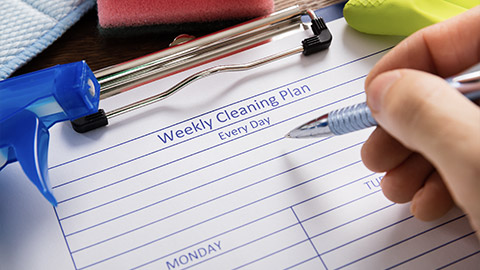
What areas are required to be cleaned and when?
- Surfaces should be wiped over to remove dirt and possible contamination - after each use.
- Holding cages and runs that are currently in use should be thoroughly cleaned daily and spot cleaned as required to remove additional faeces, vomit, and spilled food.
- Bedding, bowls, toys, and other accessories should be cleaned after each use.
- Equipment used during the treatment or handling of animals must be cleaned and sanitised - after each use.
- Hands should be washed after each contact with potential sources of contamination.
- Floors should be mopped regularly at least daily and spot cleaned as required.
- Bins should be emptied daily and additionally as required if they are full.
- Drains should be cleaned weekly.
- Cleaning equipment, such as mops, buckets, and washing machines should be cleaned regularly
- Scrub tops, gowns, and/or work clothes should be washed regularly and changed or removed when entering/exiting 'controlled' areas (such as surgical suites and isolation wards).
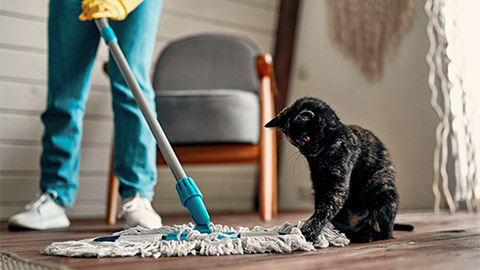
Most workplaces will have documented cleaning schedules that form part of the policies and procedures manual / system. A cleaning schedule and the policy/procedure that it is linked to will normally outline the following information.
- Areas to be cleaned.
- Equipment required.
- Cleaning techniques.
- Personal protective equipment (PPE) required.
- Health and safety information related to particular cleaning processes, products, or equipment.
- Frequency of cleaning required.
- Checklists for recording when cleaning has been completed.
Watch
Next watch some videos from animal care specialists and facilities discussing their cleaning techniques and roles.
Below read the following case study from Happy Paw Animal Care Centre and an example of their cleaning schedule.
Case Study

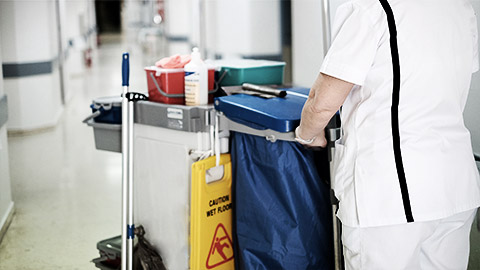
Cleaning
Waste removal and wiping/scrubbing with water and mild detergent will remove dirt and grime from a surface or environment.
Examples of detergents include:
- dishwashing liquid
- floor cleaner
- multipurpose cleaner
- laundry detergent.
Scrubbing prevents a biofilm, which, if present, can create a barrier that protects microorganisms from physical removal or disinfection. Different areas may require different cleaning strategies depending on the nature of the surface and its use.
Sanitising
Chemical agents that can be applied to inanimate objects that cause the destruction or inhibition of most microorganisms are known as disinfectants.
Examples of disinfectants are:
- Chlorine-based (bleach)
- Solutions with Quaternary Ammonium Compounds (F10)
- Alcohol-based solutions at least 70% concentration (hand sanitisers)
- Povidone-iodine topical solutions (Betadine)
As disinfectants are often corrosive and can be carcinogenic, routine use in low-risk areas may not be recommended. This is primarily due to the risk of un-targeted use of disinfectants, possibly contributing to the development of microbial resistance.
A commonly used safe disinfectant is F10 (quaternary ammonium and biguanide compound), which is effective against various common viruses, bacteria, spores, and fungi, including Parvovirus. You can read more about F10 here: F10 SC Veterinary Disinfection Information.
Ensure you are familiar with the safety recommendations of any potentially hazardous product before using it. If the surface or equipment you are cleaning is related to an animal of unknown health status, a broad-spectrum disinfectant should be used, such as F10.
If the animal has a diagnosed illness, a disinfectant that is effective against the pathogen identified should be used. Remember to ensure that disinfectants do not come into direct contact with animals or their food/water. All surfaces and utensils must be thoroughly dried before returning the animal to the area.
Sanitising can also be achieved through the application of heat. The use of autoclaves (industrial sterilising machines) to sanitise/sterilise caging, water bottles, and feeding bowls, as well as utensils, might be standard practice in animal care facilities where infection and biosecurity are a high risk, like veterinary hospitals or scientific laboratories.
| Sanitising | Chemical agents that can be applied to =animate objects that cause the destruction or inhibition of most micro-organisms are known as disinfectants. |
|---|---|
| Cleaning | Waste removal and wiping/scrubbing with water and mild detergent will remove dirt and grime from a surface or environment. |
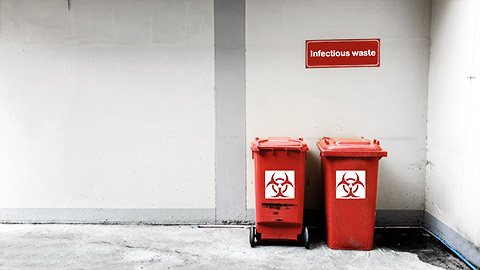
In the animal care industry, you will encounter many forms of waste, some of which may be hazardous to your health. For example:
Animal Waste
Biological in nature and potentially cause harm by acting as a pathological waste while undergoing decomposition. Examples include the following (assuming that the items are not infectious or contaminated):
- animal carcasses, limbs, and tissue
- used animal bedding and leftover food items
- faeces.
When disposing of these items, you must not mix non-compatible waste items with animal waste as they must be separate. Avoid the use of plastic bags (unless necessary). Ensure that bins are not too heavy.
Small animal carcasses can be sent to a general landfill (the tip), but always check with your local council facility first. Some councils have limitations, such as certain days for drop-off and size restrictions. The council may offer a pick-up service for larger animals.
Chemical Waste
Generated from the use of chemicals for medical and or cleaning purposes, has the potential to cause injury or illness if spilled on the skin, inhaled, or swallowed. Chemical waste is divided into two categories relating to its disposal:
- Sewerable - Items that can be deposited into drains/sewers. These usually include most cleaning (detergent) / disinfecting agents as long as they have been sufficiently diluted with water.
- Non-sewerable - Certain liquids and solids must be disposed of in specific ways as they might be toxic to the environment.
Refer to the applicable Safety Data Sheet (SDS) for specific information about each type of chemical you use before disposing of any chemical waste. Ensure you thoroughly rinse out empty bottles or containers and dispose of them as directed; never re-purpose a chemical container for any other type of product.
Clinical Waste
Medical/biological waste that is potentially infectious or contaminated has the potential to cause illness as a pathological substance or can be a host/carrier of a disease. Examples include:
- sharps
- pharmaceuticals
- fixed tissue/histology sections
- infectious or contaminated carcasses, cage linings, or faeces.
This type of waste must be placed into an appropriate container and arranged to be collected for disposal by a licensed waste transporter. It will be disposed of in the safest and least harmful way and is generally incinerated at a licensed facility. Similarly, medical sharp waste (syringes and needles) must be placed in a tamper-proof container that is suitably identified as containing sharps or clinical waste and then transported to or picked up by a licensed facility for safe disposal.
Sustainability Practices
When we think about animals and the animal care environment, sustainability is not a concept that comes to the forefront.
Sustainability can affect certain areas, such as:
- Environmental Impact: How we deal with waste and by-products from animals. Are we disposing of the waste correctly?
- Economic Viability: The cost of stocking and operating the clinic
Examples of Sustainable Practices in Animal Care
-
Energy Efficiency: Implementing energy-efficient lighting, heating, and cooling systems to reduce energy consumption.
- Water Conservation: Using water-saving devices and practices to reduce water use in cleaning and caring for animals.
- Recycling and Waste Reduction: Establishing recycling programs for materials like paper, plastic, and metals and composting organic waste.
- Sustainable Sourcing: Choosing eco-friendly and sustainably sourced products for animal care, such as biodegradable cleaning supplies and sustainably produced food.
- Green Building Design: Constructing and maintaining facilities with sustainable materials and designs that reduce environmental impact.
